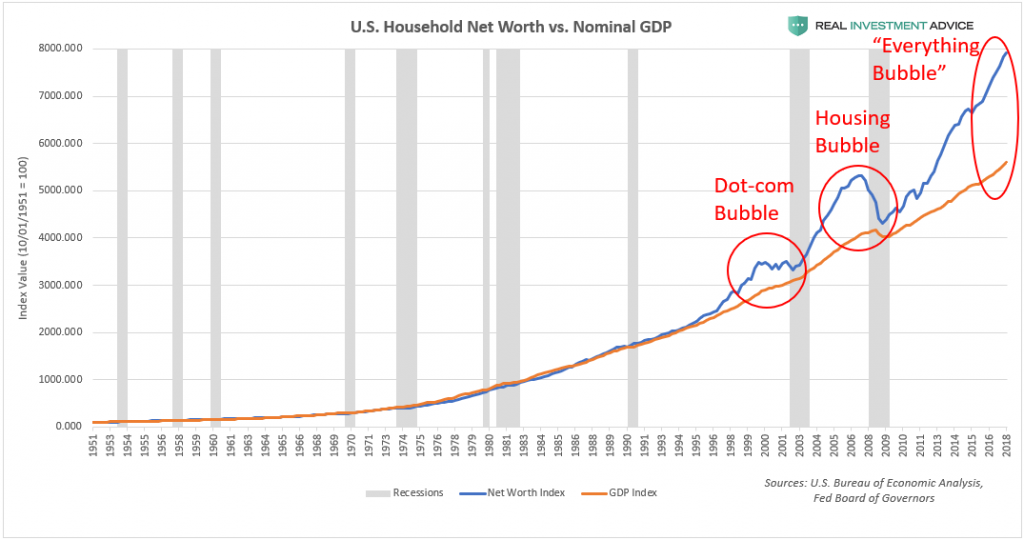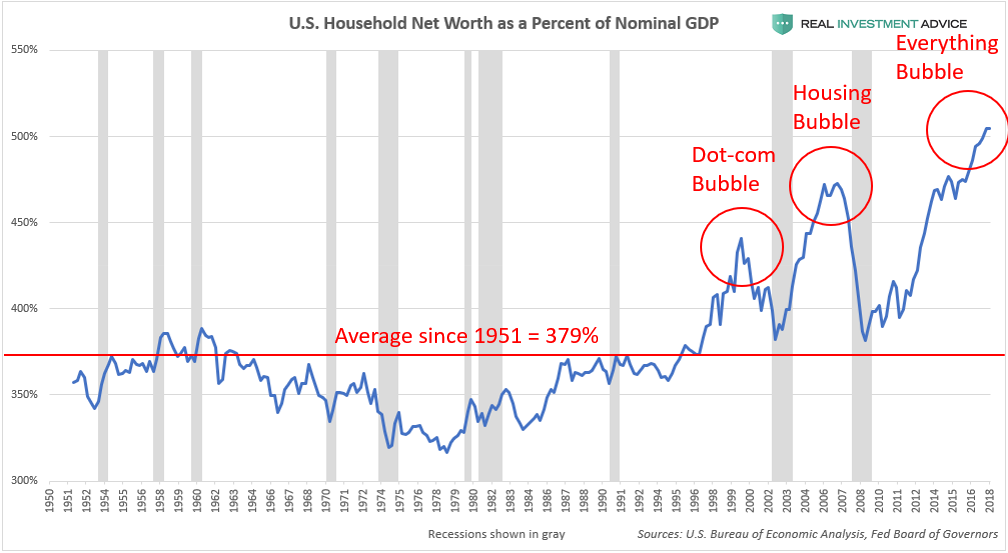The global elite are meeting in Davos, Switzerland this week and
are richer than ever. Bloomberg reports –
A decade after the financial crisis poured flat champagne on the World Economic Forum, gold-collar executives set to gather there this week have bounced back, and then some.
David Rubenstein has doubled his fortune since 2009. Jamie Dimon has more than tripled his net worth. And Stephen Schwarzman has increased his wealth six-fold.
It’s a remarkable showing given the economic and political tumult of the past decade, from Lehman Brothers to Brexit to Donald Trump. The fortunes of a dozen 2009 Davos attendees have soared by a combined $175 billion, even as median U.S. household wealth has stagnated, a Bloomberg analysis found.
The data illustrate the ever-widening gap between the true haves—those in the 0.1 percent—and the have-nots of a global economy. UBS and PwC Billionaires Insights reports show that global billionaire wealth has grown from $3.4 trillion in 2009 to $8.9 trillion in 2017. A report from Oxfam on Monday revealed that the poorest half of the world saw their wealth fall by 11 percent last year.
As I discussed a few months ago in Forbes, the post-Great Recession wealth boom is actually an unsustainable bubble that is fueled by the Fed –
Since the dark days of the Great Recession in 2009, America has experienced one of the most powerful household wealth booms in its history. Household wealth has ballooned by approximately $46 trillion or 83% to an all-time high of $100.8 trillion. While most people welcome and applaud a wealth boom like this, my research shows that it is actually another dangerous bubble that is similar to the U.S. housing bubble of the mid-2000s. In this piece, I will explain why America’s wealth boom is artificial and heading for a devastating bust.
The chart below compares U.S. household wealth (blue line) to the underlying economy or GDP (orange line). In sustainable, organic wealth booms, household wealth tracks GDP very closely. Starting in the late-1990s, however, household wealth decoupled from the GDP as the tech stock bubble helped to inflate American portfolios until it came crashing down in the early-2000s. In the mid-2000s, the U.S. housing bubble boosted household wealth until the 2008 housing crash. Now, here we are in 2018, and the gap between household wealth and the underlying economy has never been larger. This unprecedented gap means that the coming reversion or bust is going to be even worse than the last two, unfortunately.

Plotting U.S. household wealth as a percentage of GDP is another way of visualizing the household wealth bubble. Since 1951, household wealth has averaged 379% of the GDP, while the Dot-com bubble peaked at 429%, the housing bubble topped out at 473%, and the current bubble has inflated household wealth to a record 505% of GDP. Interestingly, the 379% average since 1951 is skewed to the upside by the unusually high household wealth since the late-1990s rolling “Bubble Era.” When the current bubble inevitably pops, household wealth may even fall below its historic average in reaction to how stretched household wealth became to the upside.

I went on to explain in Forbes –
In the post-Great Recession years, there has been an incredible amount of hand-wringing over rising wealth and income inequality – and rightfully so. Here are just a few statistics that show how extreme wealth inequality has become: the top 1% of U.S. income-earners possess 35.5% of the country’s private wealth, the top 10% possess 75% of wealth, the top 20% possess 87% of wealth, while the bottom 50% possess just 1.1% of the total wealth.
The mainstream narrative about rising wealth inequality is that it is a problem that is inherent to capitalism itself and that the only solution is increased regulation of the economy, raising taxes for the rich, and so on. Unfortunately, this mainstream narrative is false because it completely ignores the role the Federal Reserve plays in creating inflation and asset bubbles that benefit the rich over the poor.
The wealthy own a disproportionate amount of assets such as stocks, bonds, and housing, the middle class are often house-rich and asset-poor, while the poor typically rent their housing and have few asset to speak of. When the Federal Reserve creates an asset price bubble or inflates the value of household wealth, the wealthy see most of the gains (even if they are just on paper) while the middle class and poor see very little.
In the case of the current household wealth boom, it is actually an unsustainable bubble that is going to burst rather than a permanent increase of wealth – when this bubble bursts, wealth inequality is actually going to shrink as the inflated assets owned by the wealthy come back to planet earth. The latter point is completely lost on left-leaning economics pundits. Society should be more worried about our dangerous asset bubbles that are going to hollow out the real economy when they burst rather than growing wealth inequality, which is a temporary phenomenon.
Because our surging wealth and income inequality is driven by a bubble, wealth redistribution and higher taxes are not the solution, contrary to the proposals of radical politicians such as Alexandria Ocasio-Cortez and Elizabeth Warren. The answer is to #EndTheFed and other central banks, free up the financial markets to work properly again without intervention, and to stop our currency from being incessantly debased. I will be expounding on these ideas greatly in the next few months.